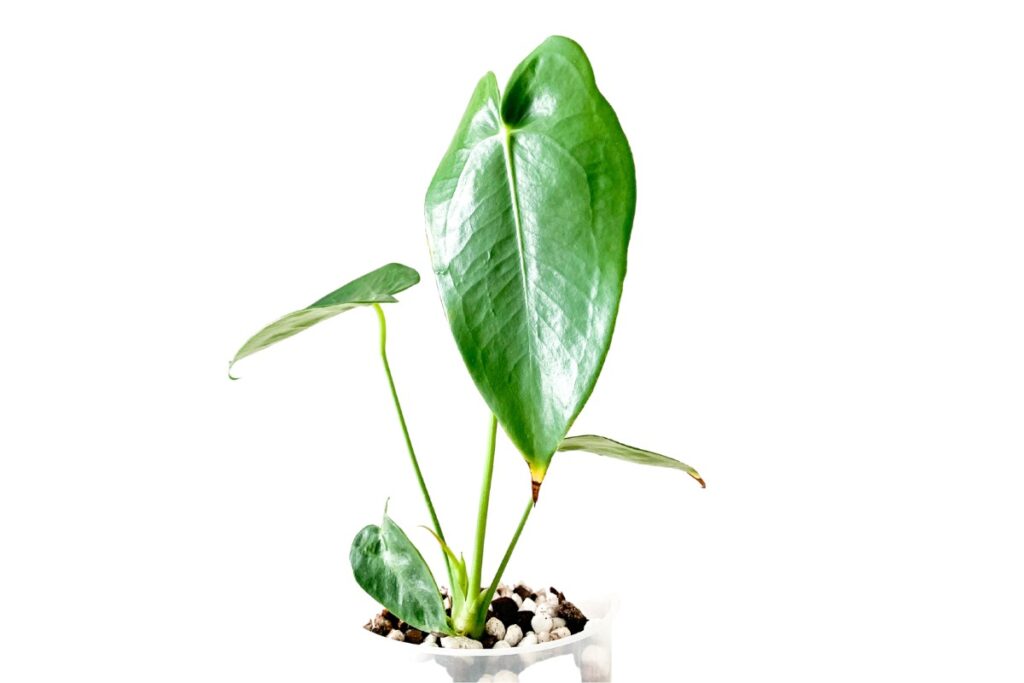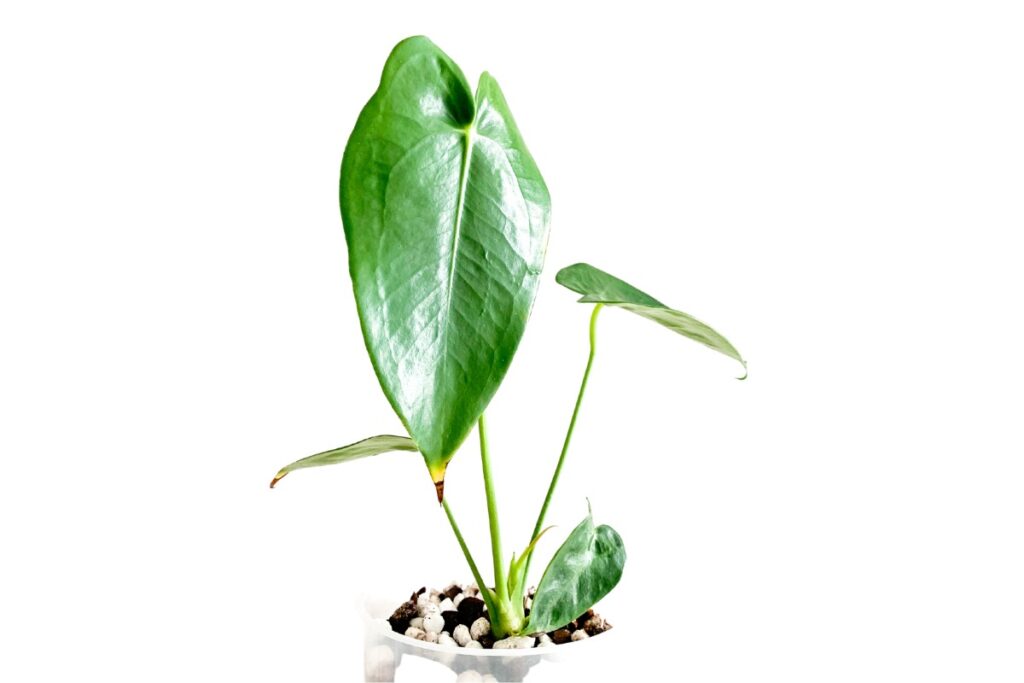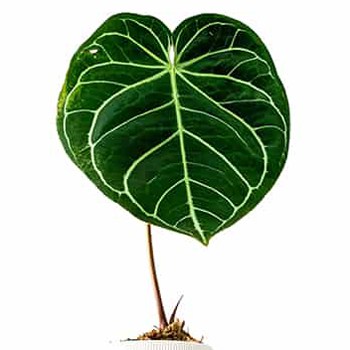Anthurium Corallinum, while often overlooked, is truly a botanical gem worth seeking out. While it might not boast the dramatic allure of the velvet varieties of anthurium, its unique charm lies in thick, wax-like heart-shaped leaves.
In this blog, we’ll dive into the appearance of Anthurium corallinum, its care requirements, and intriguing hybrids. And if you’re keen on plants with a similar look, I’ve curated a selection just for you.

Anthurium corallinum growing in an aroid mix
Anthurium Corallinum Appearance
Anthurium corallinum has thick, glossy, heart-shaped leaves that are bright green in color and have a plastic-like, stiff texture.
With a waxy feel reminiscent of both Anthurium veitchii, without the ribbing, and Anthurium esmeraldense, these leaves slightly cup at their base, revealing speckles radiating a hue in line with the leaf’s primary vein.
Anthurium corallinum is native to the Tropical Lower Montane wet forests of Ecuador.
Anthurium corallinum is classified as an epiphytic species in the Araceae family. It belongs to the Calomystrium section, alongside Anthurium recavum and Anthurium andraeanum.

Anthurium Corallinum Care
Light
Anthurium corallinum plant prefers bright, indirect light. Direct sunlight can burn the leaves, while too little light can slow down its growth and reduce the vibrancy of its color. Check out my comprehensive guide on lighting requirements for anthuriums.
Soil
A well-draining potting mix is crucial. A chunky potting mix of orchid bark, perlite, coco chicks, horticultural charcoal, and worm castings will work well. Read my ultimate guide on potting mix for anthuriums.
Watering
Anthurium corallinum likes to be kept relatively moist but not waterlogged. Ensure good drainage to prevent root rot. For in-depth information on how to water anthuriums, check out my guide.
Humidity
Being a tropical plant, it thrives in higher humidity levels. If you’re growing it as a houseplant in a drier environment, consider placing it near a humidifier or in IKEA-like cabinets grouped with your other aroids.
Temperature
Anthurium corallinum prefers temperatures between 65°F and 80°F (18°C – 27°C). It’s sensitive to cold, so keep it away from drafts and cold windows during the winter.
Fertilization
During the growing season (typically spring and summer), feed the plant with a balanced, water-soluble fertilizer diluted to half the recommended strength. Reduce feeding in the fall and winter when the plant’s growth slows down. But if you’re growing the plant under grow lights, there is no need to slow down the fertilizing regimen.
Pests
Like many houseplants, Anthuriums can be susceptible to pests like aphids, thrips, and spider mites. Regularly inspect your plant and take action immediately if you notice any pests. Read more about the most common anthurium pests in my guide: 6 Most Common Anthurium Pests (and How to Deal With Them)
Diseases
Anthurium corallinum can fall prey to several diseases, with fungal and bacterial infections being the most common culprits. For a guide on how to spot them, check out my other blogs: Anthurium Diseases: Your Guide to Identification and Treatment
Toxicity
It’s worth noting that Anthuriums, like other members of the Araceae family, contain calcium oxalate crystals, which can be irritating if ingested. Anthuriums are toxic to pets and humans.
Anthurium Corallinum x Luxurians
Anthurium Corallinum x Luxurians is a pricy but spicy latest hybrid featuring Anthurium luxurians. It gets the thick bullate texture after the luxurians but its quite compact and has a small appearance after corallinum.
Plants that are similar to Anthurium corallinum
We’ve all been there: falling for a plant and then craving every look-alike out there. I know I have.
If the Anthurium corallinum has caught your eye and you’re itching to expand your collection with its doppelgängers, here’s a list to explore:
- Anthurium Esmeraldense
- Anthurium Peltigerum
- Anthurium Timplowmanii
- Anthurium Debilipeltatum
- Anthurium Longissimilobum

